Made In Stainless Steel pan review – it's sturdy, non-toxic, and excellent value for money
I’ve thrown everything at this pan – sauces, sears, even 'pot stickers' – and it passed with flying colors
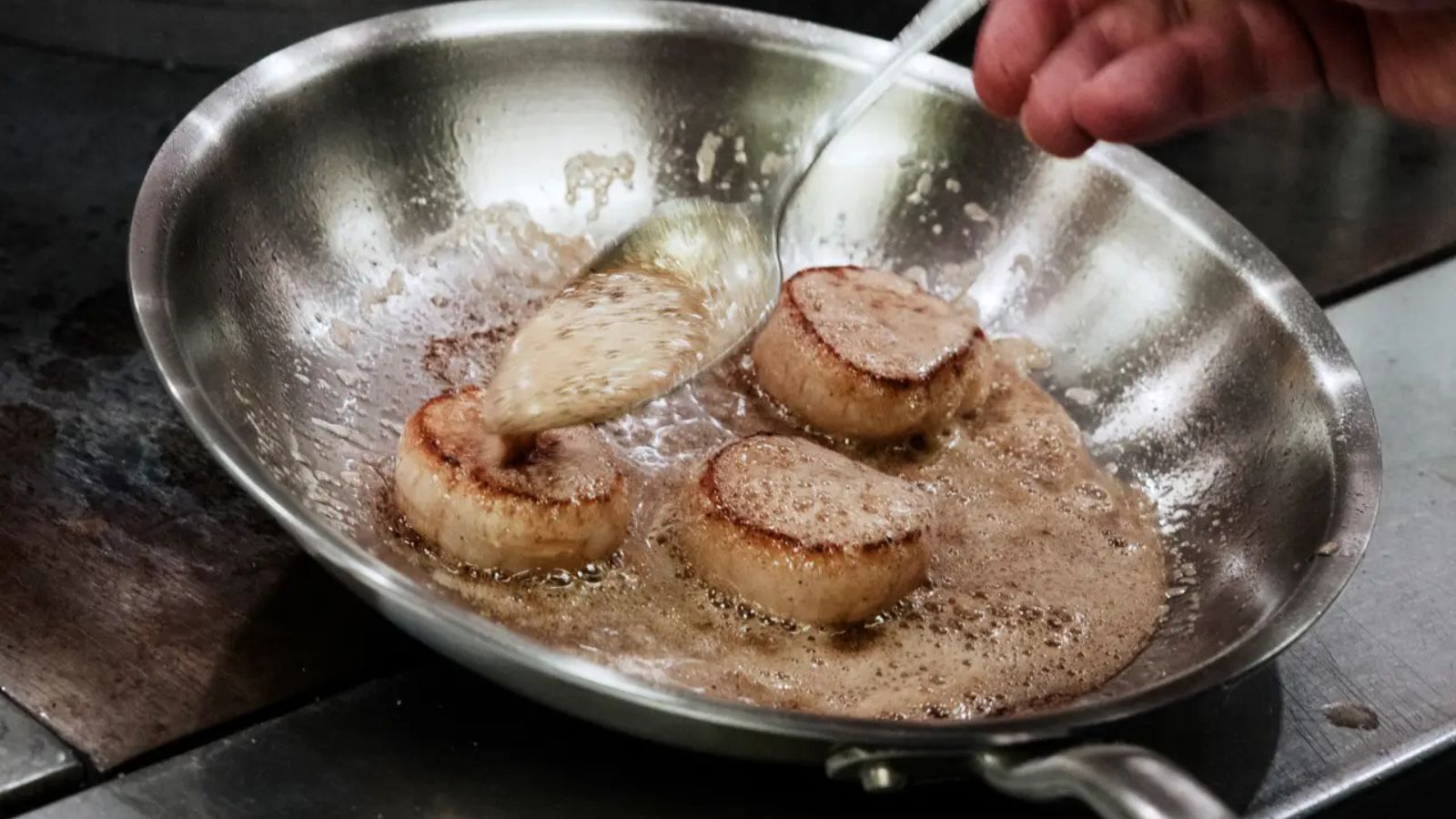
This is a solid investment that delivers professional-level performance without an ultra-luxury price tag. The pan is sturdy, well-balanced, heats evenly, and handles everything from delicate sauces to high-heat searing with ease.
-
+
Sturdy, reliable, and well-balanced
-
+
Even heating 5-ply layers
-
+
Heat-resistant handle
-
+
Non-reactive with acidic ingredients
-
+
Non-toxic stainless steel
-
+
Resists fingerprints
-
+
Very durable
-
+
Good value for money
-
-
Not great for delicate eggs
-
-
Prone to slight discoloration
You can trust Homes & Gardens.
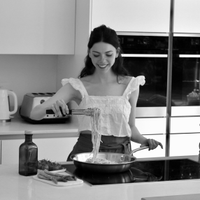
Many home cooks tell me they want to ditch their flaky Teflon frying pans but get nervous about the alternatives – especially stainless steel. I get it. Non-stick is brain-off cooking (heat, sizzle, done), while stainless steel demands a little skill... you’ve got to heat it right and oil it well. But when you nail it? Restaurant-level results.
That’s why chefs love it. It’s the best non-toxic cookware – no forever chemicals – and built for serious heat and control on everyday cooking tasks, like sautéing, browning, and pan sauces.
When I asked chefs for their favorite stainless steel pans, one name came up again and again: Made In. Crafted in Italy and the USA, the Made In Stainless Steel Pan is clad in five layers of premium metal, with a stay-cool handle, lightweight feel, and no-nonsense design. On paper, it’s everything you’d want in a pan. But could it really make stainless steel feel effortless... even in the heat of a dinner rush? I tested it for a month to find out.
Specifications
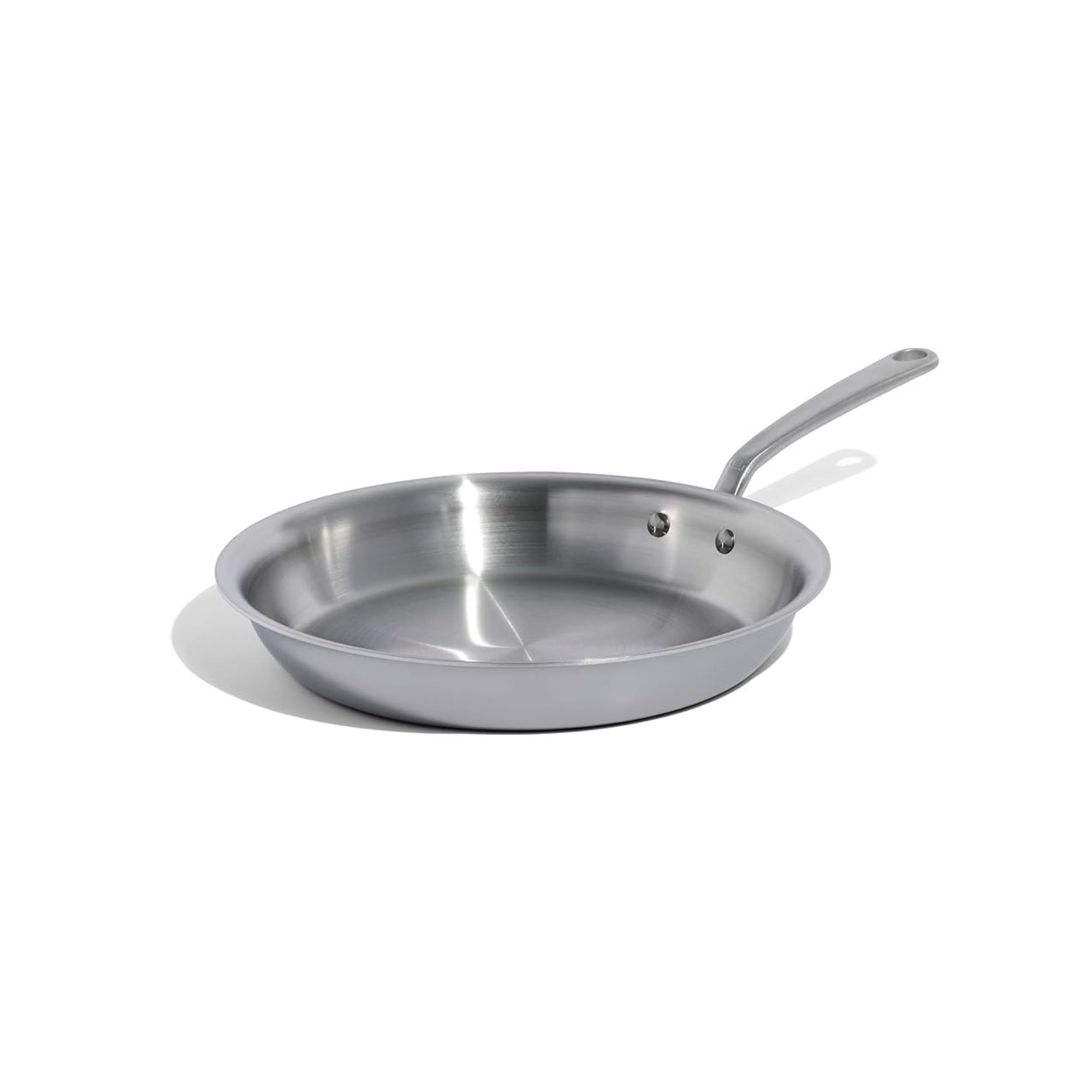
- Materials: 5-ply stainless steel and aluminum
- Sizes: 8 inch, 10 inch, 12 inch
- Heat tolerance: Oven safe to 800°F
- Induction safe: Yes
- Dishwasher safe: Yes, but hand-washing recommended
- Origin: Made in Italy & USA
- Warranty: Lifetime Warranty
- Price: Starting from $119 at Made In
Design & first impressions
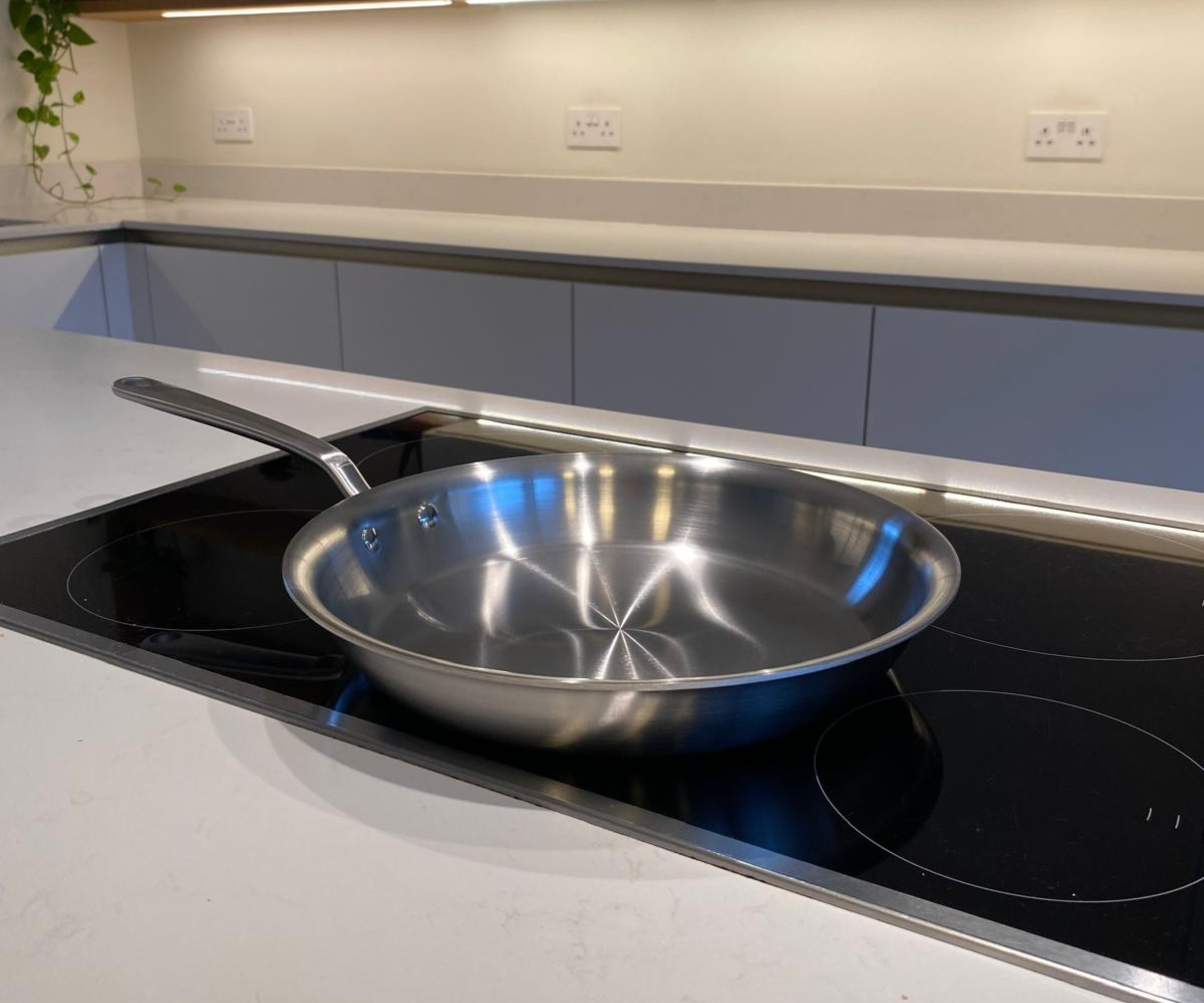
In the picture above, the Made In Stainless Steel Pan looks quite shiny in the beaming light from the extractor fan above, but it actually has a brushed exterior. It is more matte than the polished, mirror-like stainless steel pans I've tried from brands like Hestan ProBond Luxe Series and All-Clad. Made In is not as fancy, but I kind of like that – the brushed surface hides fingerprints and smudges much better than a reflective surface, and it still looks very professional.
When I set it on my induction stove, the pan felt sturdy but surprisingly lightweight in my hands. It is well-constructed without any unnecessary frills – basic, but brilliant. I did feel like I was about to cook up a storm on a show like The Bear.
The only hitch? I made a rookie error – surprising, given I’ve tested cupboards full of pans in my career. I ordered the 12-inch model, which turned out to be enormous and far too big for the Miele induction hob in the test kitchen. Learn from my mistake: check the size before you buy. Bigger isn’t always better, and if your heat source is smaller than the pan’s base, cooking performance will suffer.
Cooking performance
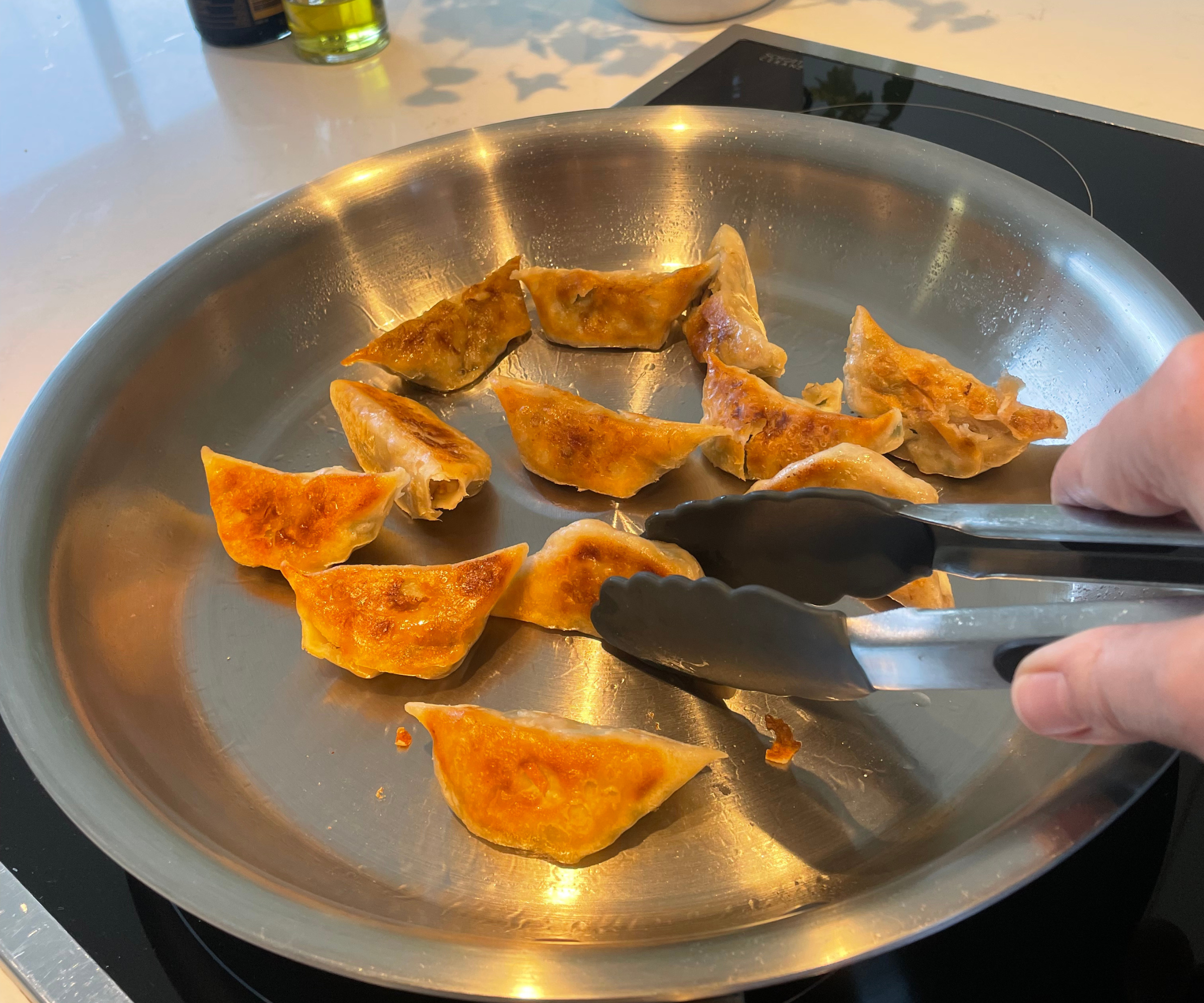
I tested the Made In Stainless Steel Pan for three weeks on all sorts of ingredients, from fried eggs to seared chicken breast. For best results, you need to learn how to make any pan non-stick - there's a technique to it.
Design expertise in your inbox – from inspiring decorating ideas and beautiful celebrity homes to practical gardening advice and shopping round-ups.
Before each test, I took my ingredients out of the refrigerator and let them sit at room temperature for around 15-20 minutes. Then, I used the Leidenfrost test. I heated the Made In Stainless Steel Pan on medium for around two minutes before flicking a few droplets of water onto the surface. If the water fizzled, I let it heat for longer. If the droplets bounced around the pan, I knew it was time to add my oil.
I swirled the oil around the pan, creating a thin but full coating across the entire surface, before adding each ingredient. Here's how each test went down.
- Onions – This is my first test for any pan – onions reveal everything about heat distribution, responsiveness, and how forgiving the surface is. They sizzled evenly, caramelized without sticking, and colored beautifully without scorching.
- Creamy tomato pasta sauce – I measured how long the Made In Stainless Steel Pan took to heat the sauce; it was a speedy 1 minute 12 seconds. Even though my pan was slightly too big for the burner, I noticed symmetrical bubbling across the surface, indicating even heat retention. The rounded edges of the pan provided plenty of room to toss the pasta into the sauce without spills.
- Seared chicken breasts – Cooking a juicy chicken fillet can be tricky, but I had no problem with the excellent sear on the Made In Stainless Steel Pan. The fillets were beautifully browned, with that satisfying fond that’s perfect for deglazing into a quick pan sauce.
- Gyozas – I was pleasantly surprised by the gorgeous golden-brown bottoms on the gyozas – there was absolutely no sticking, they were easy to flip, and crisp on the outside, and juicy within.
- Fried eggs – A bit of a mess, if I'm quite honest. I don't like frying eggs in a stainless steel pan. Even the brand themselves say: 'The surface is not naturally nonstick, so we don’t recommend these pans for delicate dishes like flaky fish or eggs.'
Overall, I enjoyed the weight and ergonomics of the Made In Stainless Steel Pan. It was well-balanced and easy to stir and toss my recipes without feeling like I was wrestling the cookware. The 'stay cool' handle was effective too.
Cleaning & maintainance
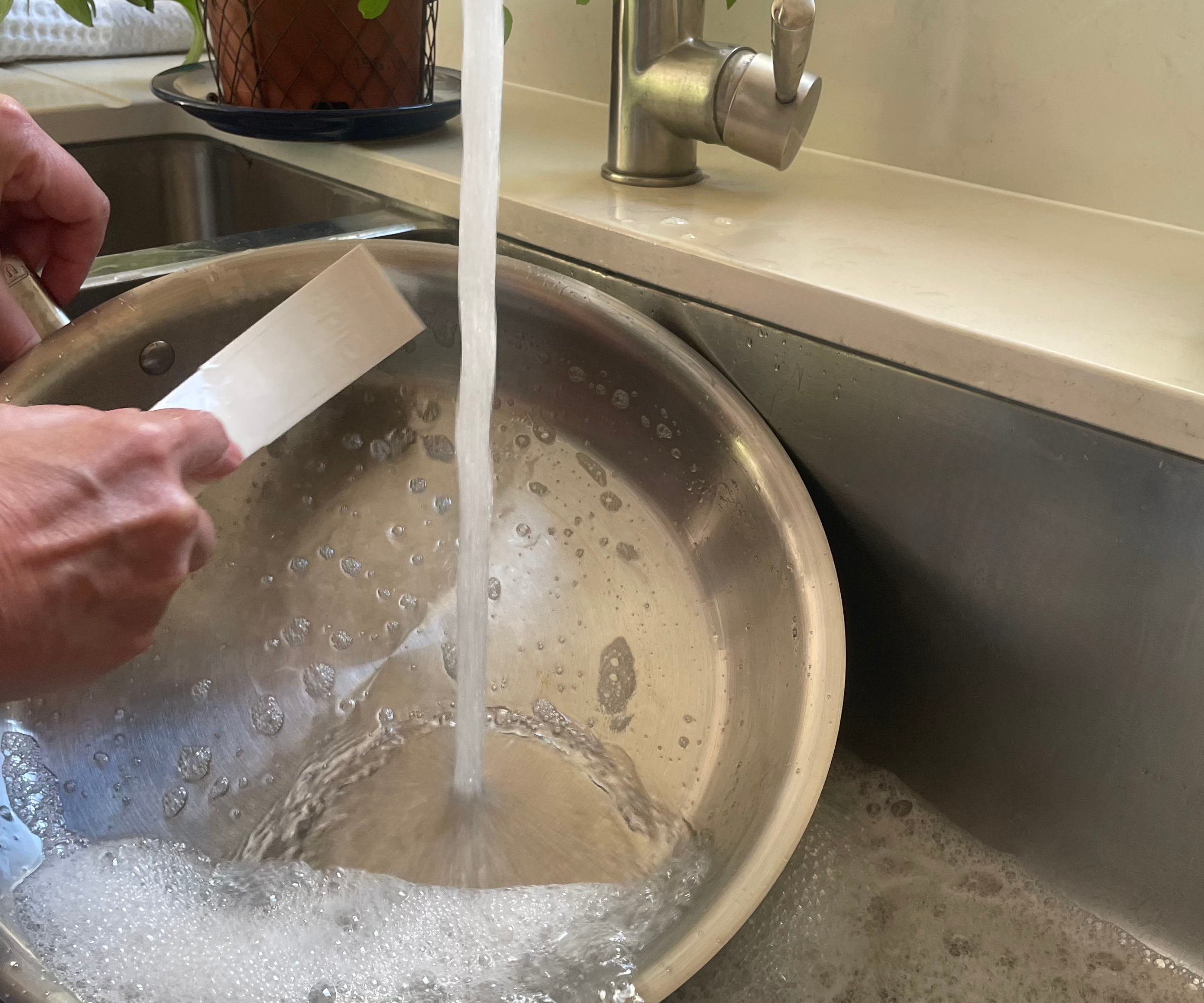
I truly don’t understand stainless steel’s bad reputation for cleaning. Sure, it takes a little longer than cleaning a slippery non-stick pan, but it still cleans up easily. A silicone scrubber, warm, soapy water and a bit of elbow grease will remove the food residue in a couple of minutes. You can soak it for longer if there's stubborn resistance.
In terms of durability, the Made In Stainless Steel Pan is highly resistant to rust, corrosion, and scratching – you can use metal utensils without fear. While the pan is low maintenance, it’s not immune to heat stains or discoloration over time. You’ll want to give it a good soak and polish occasionally to keep it spotless. I’ve found that a bit of Barkeeper’s Friend from Walmart keeps it looking good.
How does it compare?
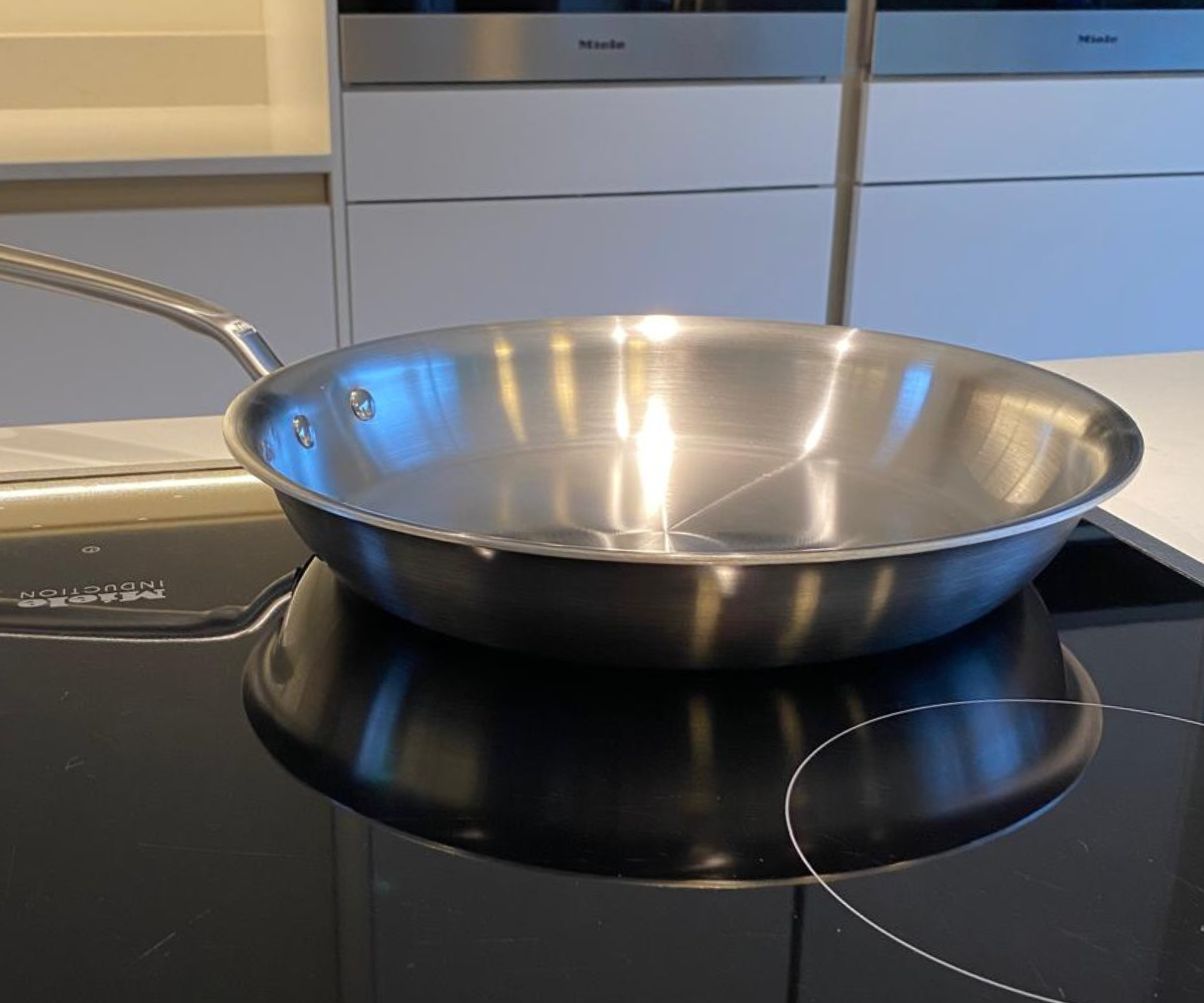
I keep very few frying pans in my kitchen after testing, simply because I don't have the space and have little need for more than a couple of high-performing pieces. Made In hasn't quite made the cut for my long-term collection. Hestan is the stainless steel pan I use on a daily basis. I have their CopperBond skillet from Williams Sonoma, which costs $350. It's ultra-responsive, luxurious, and professional – it heats evenly and cooks beautifully. I can never go back.
The Made In Stainless Steel Pan, by comparison, is a little more basic. It’s solid, reliable, and well-constructed with 5-ply stainless steel, but it doesn’t have the same luxe appeal (or eye-watering price tag) as a brand like Hestan. It still creates an amazing sear, so if budget is your main consideration, Made In is a winner.
Tramontina is an even more affordable stainless steel cookware brand, but it sits on another level below Made In. Most of their higher-end stainless lines are 3-ply, so while they distribute heat decently, they don’t sear as evenly or feel as refined.
If you're not ready to make the leap from non-stick to stainless steel, the HexClad Hybrid Pan offers an interesting compromise: stainless steel with a non-stick surface. I also keep a HexClad pan in my kitchen for cooking eggs. It heats quickly, and it's amazing for sticky foods like omelettes and tofu, but I’ve found it requires a bit of care to maintain that non-stick layer, and it doesn't give the same searing effect on meat as a fully stainless steel pan, like Made In.
In short: Hestan is top-level, inspiring and luxurious, Made In is great value, solid and reliable, Tramontina is functional but very basic. HexClad straddles the line between stainless steel and non-stick but sacrifices a bit of precision.
What do customer reviews say?
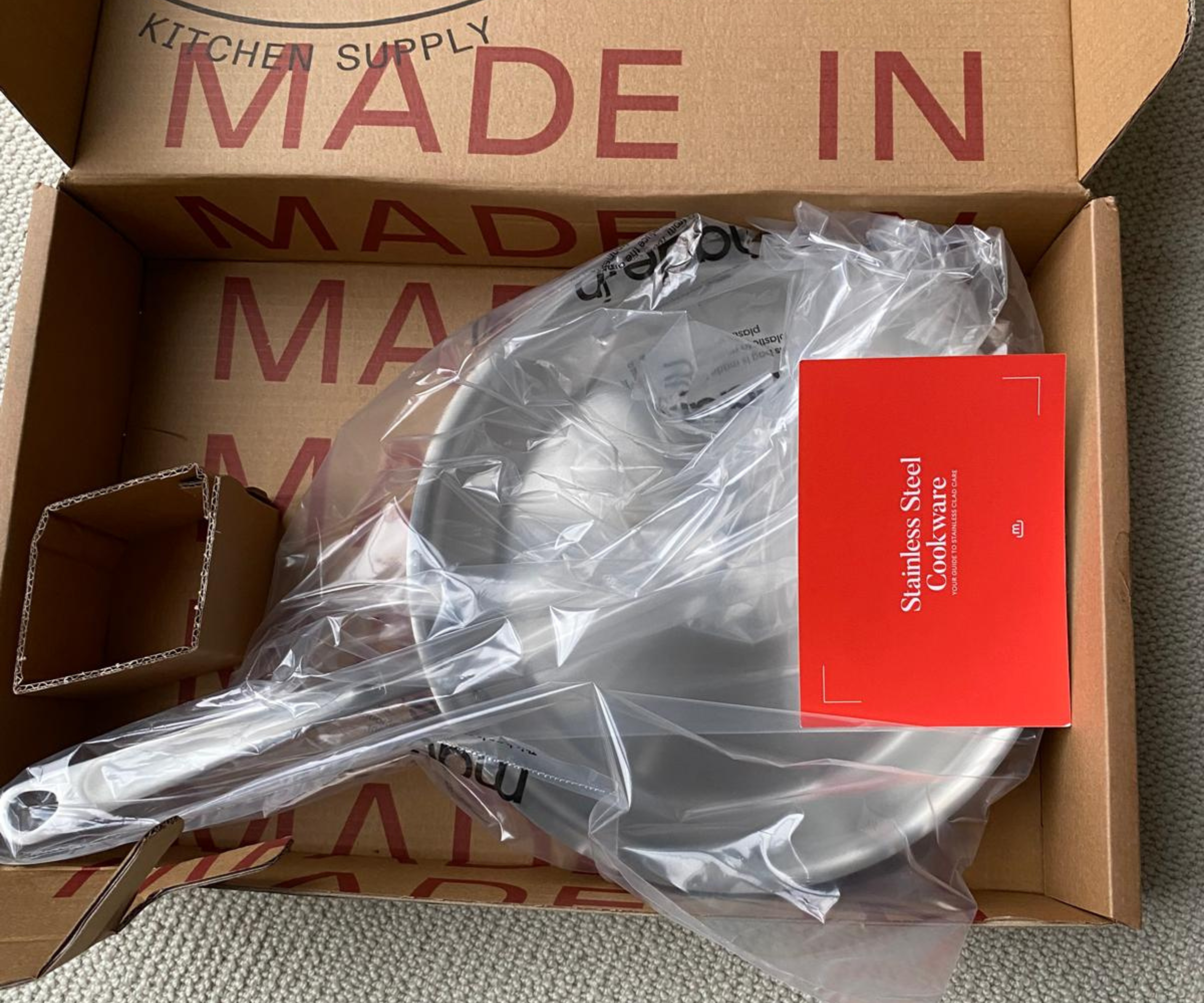
Customers seem to love the Made In Stainless Steel Pan and their website is packed with five-star reviews, with an average score of 4.8 stars.
One customer says: 'I was always afraid of cooking with stainless steel because I heard too many horror stories about food sticking and cleaning being a nightmare. I looked up how to properly cook on stainless and I could not be happier with how this skillet performs. I have cooked eggs and browned meat with very minimal sticking. Afterwards, the pan cleans up easily with dish soap and a brush. I will be replacing most of my non-stick cookware with Made In pots and pans.'
Most of the poor reviews for the Made In Stainless Steel Pan talk about ingredients sticking to the pan, but I honestly think that speaks to poor technique. If you're not used to stainless steel, this pan could take a bit of trial and error – even if you have used this material for years, every brand is different.
Others are concerned about warping. One poor review says: 'These pans are so prone to warping on electric stoves. Even on medium heat.' I didn't notice that at all in my tests, my pan still looks as good as new, but I'll keep using it in my rotation for around 6-9 months as part of long-term testing and report back if I experience any issues.
Should you buy it?
For me, the answer is yes. At $119 for an 8-inch Made In Stainless Steel Pan on MadeIn.com, it’s a solid investment that delivers professional-level performance without an ultra-luxury price tag. It’s sturdy, well-balanced, heats evenly, and handles everything from delicate sauces to high-heat searing with ease. The brushed finish keeps it looking good without constant polishing, and the stay-cool handle makes it comfortable to use.
If you’re ready to step up from non-stick and want a pan that’s reliable, versatile, and built to last, the Made In Stainless Steel Pan is absolutely worth the money. You might just want to add their small Made In CeramiClad non-stick pan on the side for sizzling your eggs.
How I tested
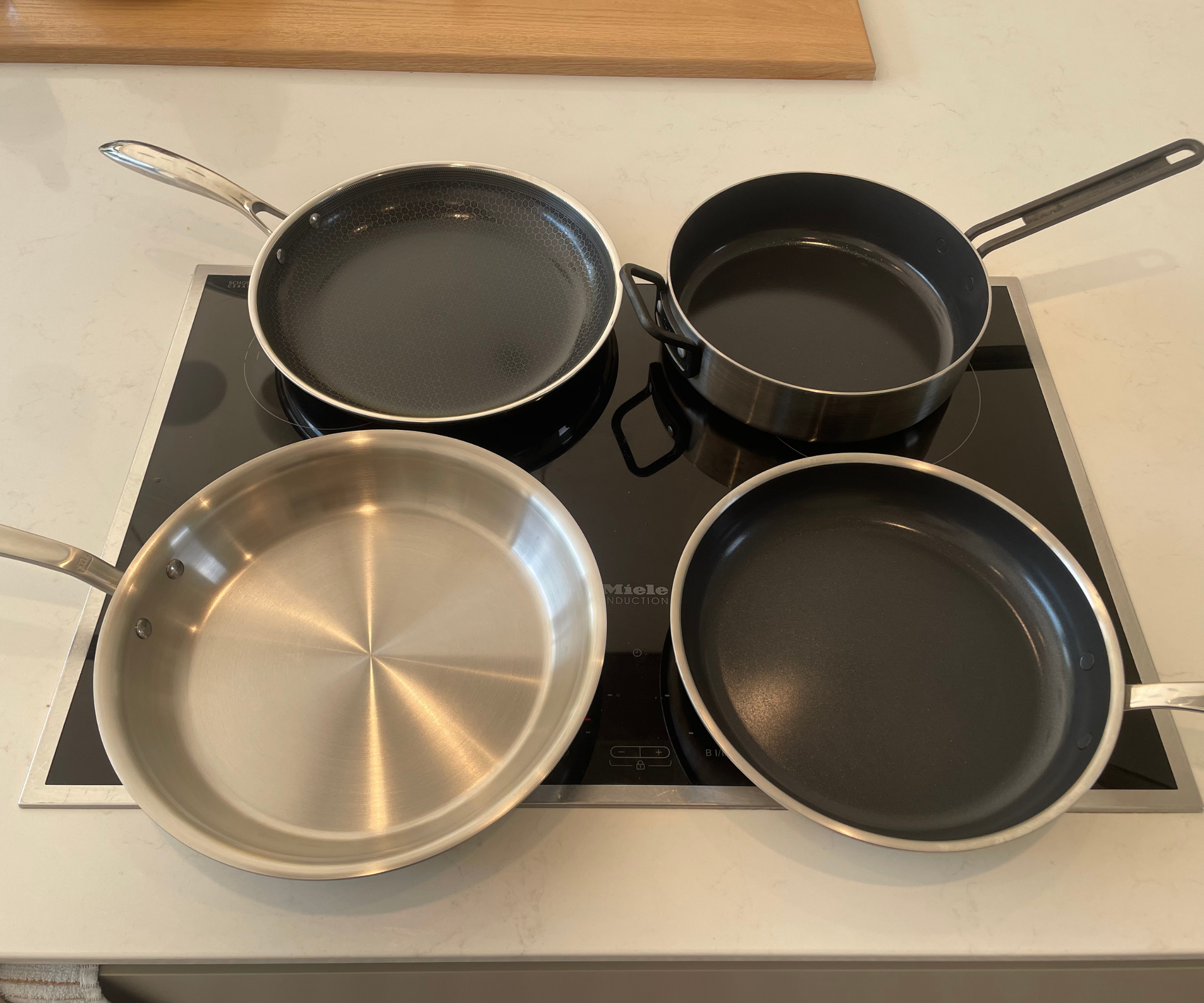
A great frying pan has to tick all the boxes: versatility, manageable weight, brilliant cooking performance, and, crucially, ease of cleaning.
I use every pan I test for over a month to see how it fares over time. I've owned many pans that have been great out of the box, but start to stick, discolor and destroy my ingredients after prolonged use. There's nothing worse than this, especially when you've forked out your hard-earned money and need to buy a replacement.
When I'm testing, I'm looking for a pan that can handle everything: from delicately frying an egg to searing a steak with a perfect crust. It should feel balanced in your hand – not so heavy it’s hard to lift, but substantial enough to retain heat evenly for consistent cooking.
I like to test notoriously sticky or delicate recipes, including: tofu, sticky cheese like halloumi or paneer, steak and fried eggs. I assess how these work in the pan and the mess they leave afterwards – because no one wants to scrub endlessly after dinner.
Also, having trained at a professional cookery school and worked as a food writer and recipe editor for some of the world's leading recipe companies, from Mindful Chef to Deliciously Ella, I do have exacting standards.
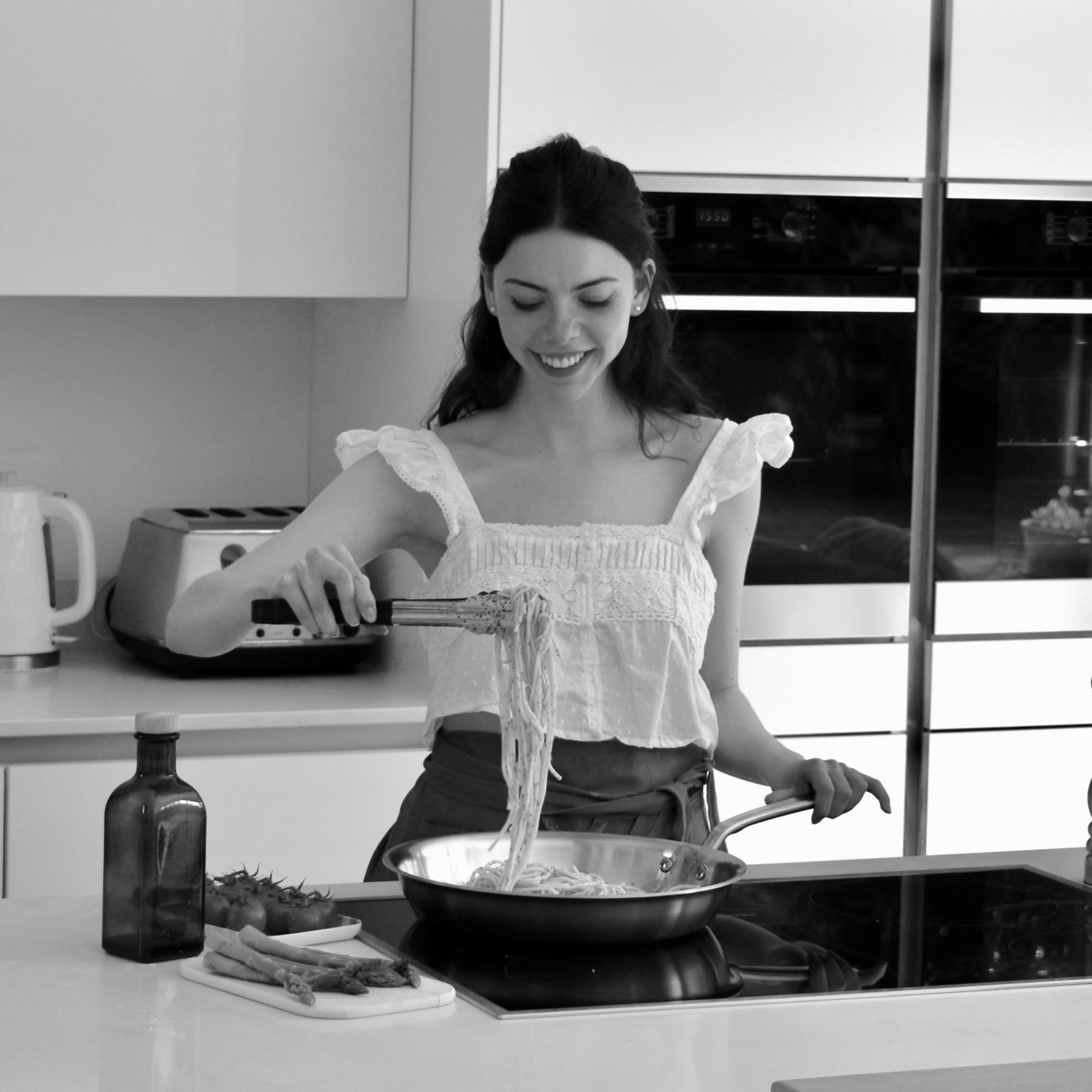
Lydia is the Kitchen Appliances Editor for Homes & Gardens, testing everything from air fryers and mixers to juicers and coffee machines. She trained in Culinary Arts at Leiths School of Food & Wine and previously served as the Recipe Editor for Mindful Chef.